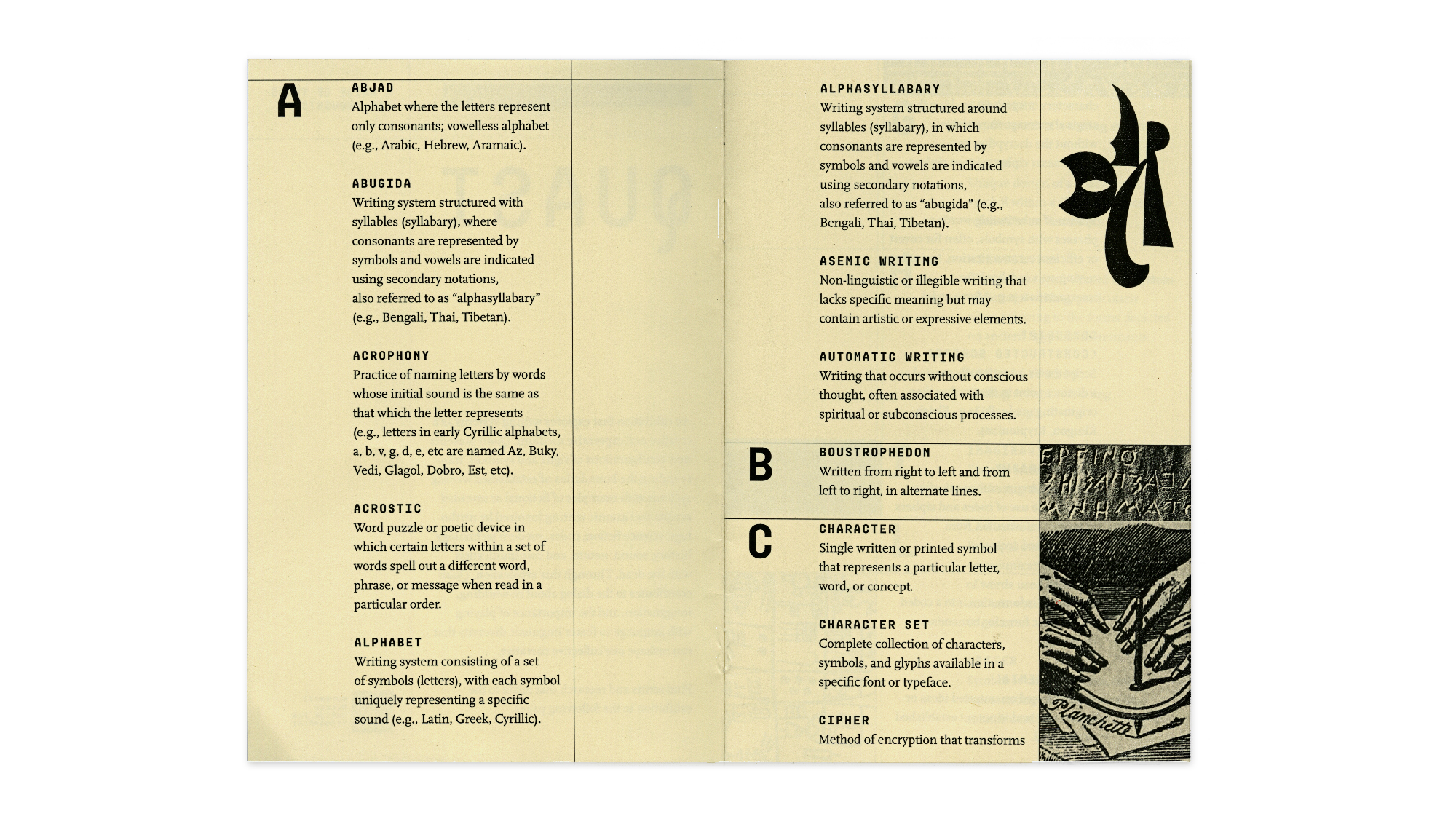overview
This section includes resources and research that shaped the project: a four-part online speaker series held in spring 2024, a growing Are.na channel where we gather materials that inform the project, and a downloadable PDF glossary defining linguistic and other terms central to its theme.
online talks
Centered around the exhibition this online speaker series features a diverse lineup of designers, artists, and linguists. These experts operate in the world of invented and fictional writing systems, where typography meets language preservation, Hollywood’s sci-fi worlds, and linguistic innovations beyond anthropocentric perspectives.
Session 1
Language Creation in Science Fiction
Christine Schreyer & Louie Mantia
This session studies the crafting of fictional languages for science fiction films, revealing the complexities that enrich narrative world-building and captivate audiences. Linguistic anthropologist Christine Schreyer and alien type designer Louie Mantia share insights into the creative processes behind Kryptonian for Hollywood’s “Man of Steel” film and the writing systems of Netflix’s “Rebel Moon,” illuminating the skill in constructing languages that breathe life into sci-fi universes.
Session 2
Crafting Personal Alphabets
Calder Ruhl Hansen & C.C. Elian
This episode focuses on the design of personal alphabets as a fusion of individual identity, artistic vision, and cultural influences. It explores inventive journeys of creating alphabets that merge written language with personal expression. Calder Ruhl Hansen presents his method for developing unique writing systems, drawing inspiration from Canadian Aboriginal Syllabics, math, and other influences, employing innovative techniques to forge meaningful symbol systems. C.C. Elian discusses Elian Script, an alphabetical script rooted in the Latin alphabet that echoes the aesthetic qualities in Asian calligraphy.


